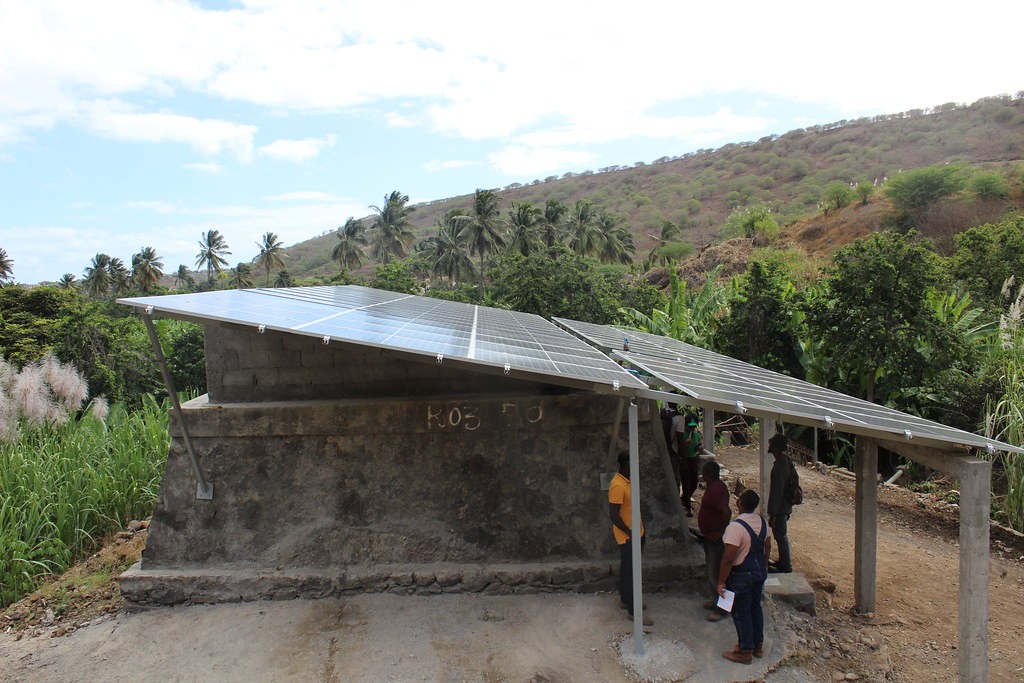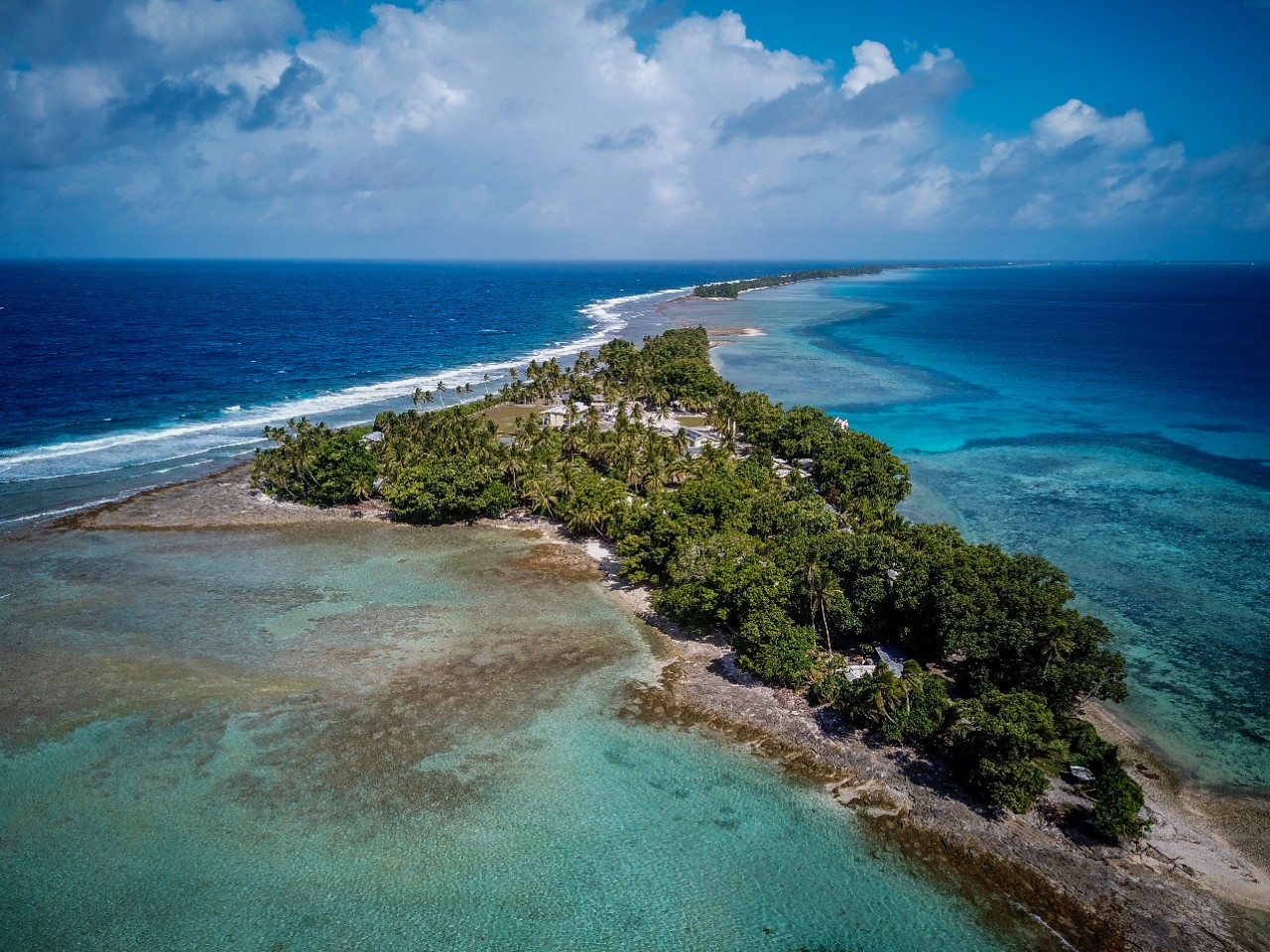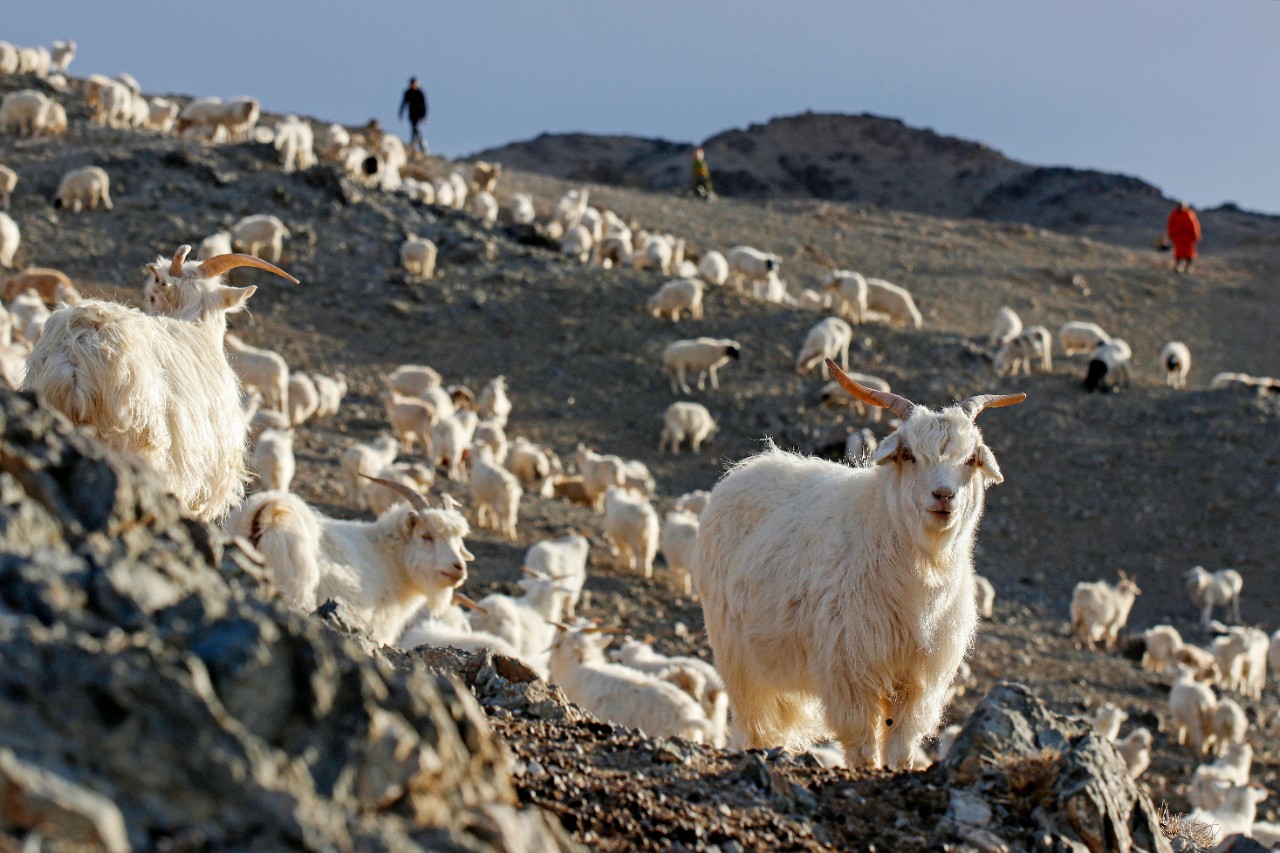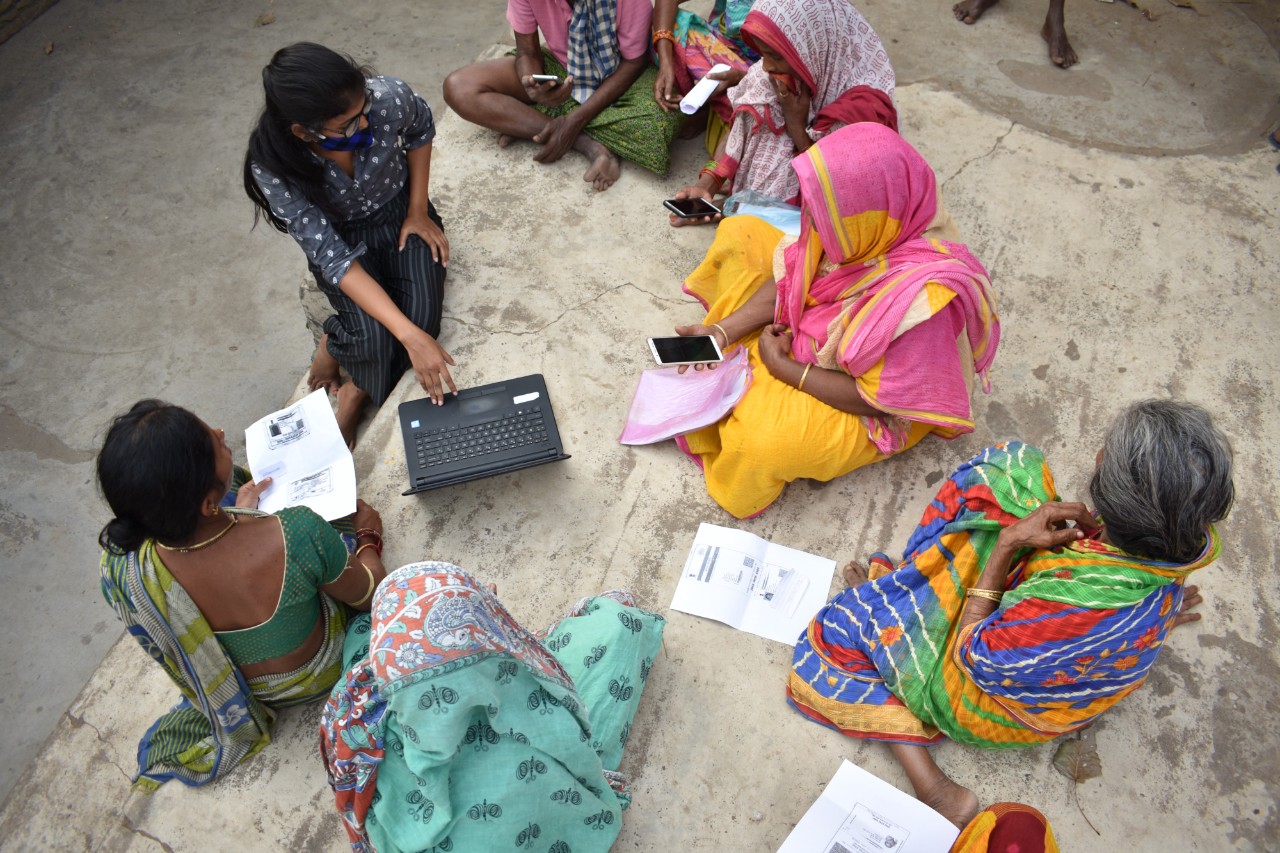Three pathways UNDP is leveraging digital technology to achieve climate goals
November 9, 2021

UNDP-supported solar panels installed in Cabo Verde.
Digital technologies and connectivity are an integral part of our modern world. As technology evolves, it transforms economic growth opportunities along with our societies and the way we work. The development community is no exception: the rapidly evolving digital age is the underlying context in which we do our work.
But without our careful attention, emerging digital technologies can widen already existing inequalities. Depending on how technologies and their accompanying code and algorithms are shaped in the years to come, our economies could potentially continue, and even increase, unsustainable production, consumption, and carbon emissions.
It’s up to us to make sure that doesn’t happen. UNDP’s new Strategic Plan 2022-2025 declares ‘a structural transformation, particularly for green, inclusive, and digital transitions’ as one of its three strategic directions. Under this umbrella, UNDP will continue to provide support to climate change adaptation and mitigation through forestry, agriculture, water, and sustainable energy as well as ecosystem and biodiversity support in over 140 countries. Building on this portfolio, we will leverage new and emerging digital technologies across three priority areas to catalyze even greater impact going forward.
DATA- to provide actionable insights to complex problems in real time and in more granularity

While government policy support and interventions have always been designed based on the best available data, we see a huge opportunity to transform how we support policy and investment decisions at all levels through digitization, using timely and granular data and novel analytics.
High resolution satellite imagery, remote sensing and easy-to-use platforms, for example, greatly improved the capacity of developing countries in the last decade to monitor and report on the environmental health of major carbon sinks, including water bodies, forests and other landscapes. Near real-time satellite imagery will continue to play a key role in the implementation of forest policies. Putting timely and precise information into the hands of policy-makers can supplement efforts to detect illegal logging or mining activities as well as monitor compliance with forest conservation commitments by landowners, indigenous peoples or communities in the context of payment for environmental services.
Understanding coastal landscapes in three dimension can change the way we analyze climate risks and vulnerability of communities and hugely contribute to building resilience in small island developing states (Tuvalu). In Malawi, use of digital technologies to record and analyze climate data are already having an impact. Weather datasets dating back decades are now being digitized, hydro-meteorological stations are reporting live actionable data via the cloud, and new public-private partnerships are supporting more nuanced analysis of climate data, and there is a concerted effort to scale it up underway. Digitally-enabled climate risk assessments can contribute to the development of future-proofed infrastructure; and agricultural advice based on reliable climate information, disseminated instantly via mobile phones, can help rural farmers build resilience to climate change.
Big data enhanced with machine learning and Artificial Intelligence can generate novel, actional analytics in granularity and scale that were not possible before. For example, the UNDP Sustainable Energy Hub is committed to accelerating access to sustainable energy for 500 million people in the next four years, together with partners. The Hub will generate a stream of analytics that can help plan optimal off-grid electricity solutions, such as solar minigrids or solar home systems, for people in rural and remote communities. Analytics such as the estimated location of communities without access to electricity, their profiles, and statuses of existing minigrid sites will help national planning and open up opportunities for off-grid solution providers.
UNDP will leverage its field presence and strong relationships with government partners to contribute to the global creation of useful data and analytics through expertise, ground proofing, and by defining the most critical problems in order to bring data to life.
INNOVATION- to unlock new financing mechanisms and intervention models

Raising cashmere goats in Mongolia.
Digital innovation can unlock new types of interventions that were not possible before. Instant exchange of information and value, peer to peer or decentralized intelligence and automation, all at significantly cheaper costs, can catalyze new financing mechanisms and help developing countries leap frog into a smart, resilient and green economy.
Digital technologies play a key role in reducing carbon emissions and protecting the environment. Smart cities, e-mobility (Uruguay) and smart agriculture all contribute to automated efficient use of resources while improving livelihoods and quality of life. Cheaper sensors and mobile payment systems have enabled the spread of new pay-as-you-go business models for solar minigrids and solar home systems, contributing to providing access to renewable energy in remote communities. Mobile technologies and remote sensing can empower indigenous communities to monitor forests and wildlife, and blockchain can bring long-needed transparency to supply chains (Mongolia).
UNDP has supported Brazil, Ecuador, Indonesia and Costa Rica access nearly USD 275 million results-based payments for REDD+ over the last 3 years, and is now helping countries access new carbon market opportunities by enhancing data management tools. While still at an early stage, blockchain also has the potential to open up more inclusive and distributed financing for carbon reduction and ecosystem conservation (example in Lebanon). We are exploring the possibility of crowdfinancing mechanisms with increased transparency to support indigenous forest communities, or to support start-up minigrid companies. Verification of carbon credits is another potential application for blockchain platforms, as transparency and accountability between actors such as governments or companies is critical to establish sufficient trust in the recording of credits.
These ideas can catalyze immense impact toward the advancement of the SDGs, if we can harness local innovations, focus their direction and rapidly scale across countries and regions. Partnerships will be critical to these efforts.
SAFEGUARDS- to promote inclusive and sustainable digital technology and innovation ecosystems

The digital divide is not only about access to basic connectivity.
Finally, safeguarding the direction of technology and innovation is critical. We must ask ourselves if and how cutting-edge technology can contribute to capacity building and the strengthening of the national or local innovation ecosystems, and leaving no one behind and doing no harm. Ensuring an inclusive and environmentally sustainable digital infrastructure, technologies and innovation is a high priority.
The digital divide is not only about access to basic connectivity. It is also about the affordability of internet access and the skillsets required to interact with and leverage the benefit of new technologies. This is critical to ensuring sustainable development in local and national economies. To support this, we need healthy digital ecosystems.
It is important that we avoid inflexible partnerships between developing economies and technology providers. Rather, UNDP seeks to build multi-faceted national digital innovation ecosystems to build a whole-of-society readiness toward the digital age. This holistic perspective includes a market approach to mission-oriented innovation, building the capacity of local developers, applying digital to different sectors, and unlocking innovation based on local and traditional knowledge through partnerships.
Importantly, we must also consider that digital technologies have potential negative environmental consequences, including energy use, material extraction, and e-waste. For example an estimated 2-2.5% of global greenhouse gas emissions come from the ICT sector. Ensuring new applications of digital technologies are inclusive, maintained with sustainable energy, practice responsible waste management, and have minimal material use and toxic emissions requires a huge effort. UNDP is working to shape and safeguard technology innovation through support to policies and regulation, as well as by advocating for its responsible use at the highest levels and by building global support through multi-stakeholder initiatives like the Coalition of Digital Environmental Sustainability.
Today’s digital transformation is often referred to as the fourth Industrial Revolution. These incredible advancements in technology can trigger huge advancements in our lives. But just as the second Industrial Revolution transformed the economy to make modern life possible, it also opened a Pandora’s box of resource depletion and an ever-increasing release of chemicals and carbon, which we’re now scrambling to correct. Today we stand at the foot of an exponential curve of digital technologies with infinite future directions in front of us, both good and bad.
Only together can we channel our technology and investments toward climate change mitigation and adaptation, with a special focus on countries who need help the most. If you’re working on solutions for climate action and want to explore opportunities for collaboration, we’d love to hear from you.
------
* We would like to also thank colleagues who contributed their expertise to this blog. Namely, Srilata Kammila, Principal Technical Advisor, Climate Change Adaptation, Nature Climate and Energy, UNDP Bureau for Policy and Programme Support; Erin Boyd, Energy Economist, Nature Climate and Energy, UNDP Bureau for Policy and Programme Support; and Bruno Guay, Global Technical Advisor, UNDP Climate and Forests.
Contact for partnership inquiries: Reina Otsuka (reina.otsuka@undp.org)

 Locations
Locations





